Expertise is predicated on cumulative experience. In order to make informed observations or develop scientific know-how individuals had to become active practitioners. It was embodied knowledge that served as the basis of scientific practice. Why then, did authors choose to include illustrations of practitioners at work in their treatises? In some cases like, Fra Giocondo’s 1511 Vitruvius ancient building techniques which were thought to have been lost to time were enlivened through narrative illustrations. In other instances, such prints could be commemorative of a monumental event such as Sixtus V’s Roman renovations where allegory mixed with representations of immense physical labour to celebrate feats of engineering and urban planning. This section explores how and why scientific practice was represented in printed treatises.
“Do not share your inventions with the many, share them only with the few who understand and love the sciences. To disclose too much of one’s inventions and achievements amounts to the same thing as downplaying one’s own genius.”
That was the advice given by Filippo Brunelleschi to the engineer Mariano Taccola. The architect, however, often seems to have forgone his own advice, offering public demonstrations of his system of linear perspective. This tension between secrecy and display came into sharp focus in the codification of craft practice in print. While artisanal knowledge was long held as proprietary, the printing press’s dissemination of craft treatises, manuals, and recipe books among other genres, offered an expanded possession of who could claim this type of knowledge. Nowhere is this more apparent than in the architectural treatise.
There were a range of approaches to architecture from the practical and material concerns of stone masons and engineers to the theorization of beautiful buildings done by humanists. The woodcuts in the 1511 edition of Vitruvius’s De Architectura are reflective of this.
While some illustrations were used to depict the harmonic proportion of the orders that were meant to be pleasing to the eye, others were intended to help the reader better understand different building techniques and practices such as this image which provided a visual aid to help the reader distinguish between opus incertum and opus reticulum bricklaying.
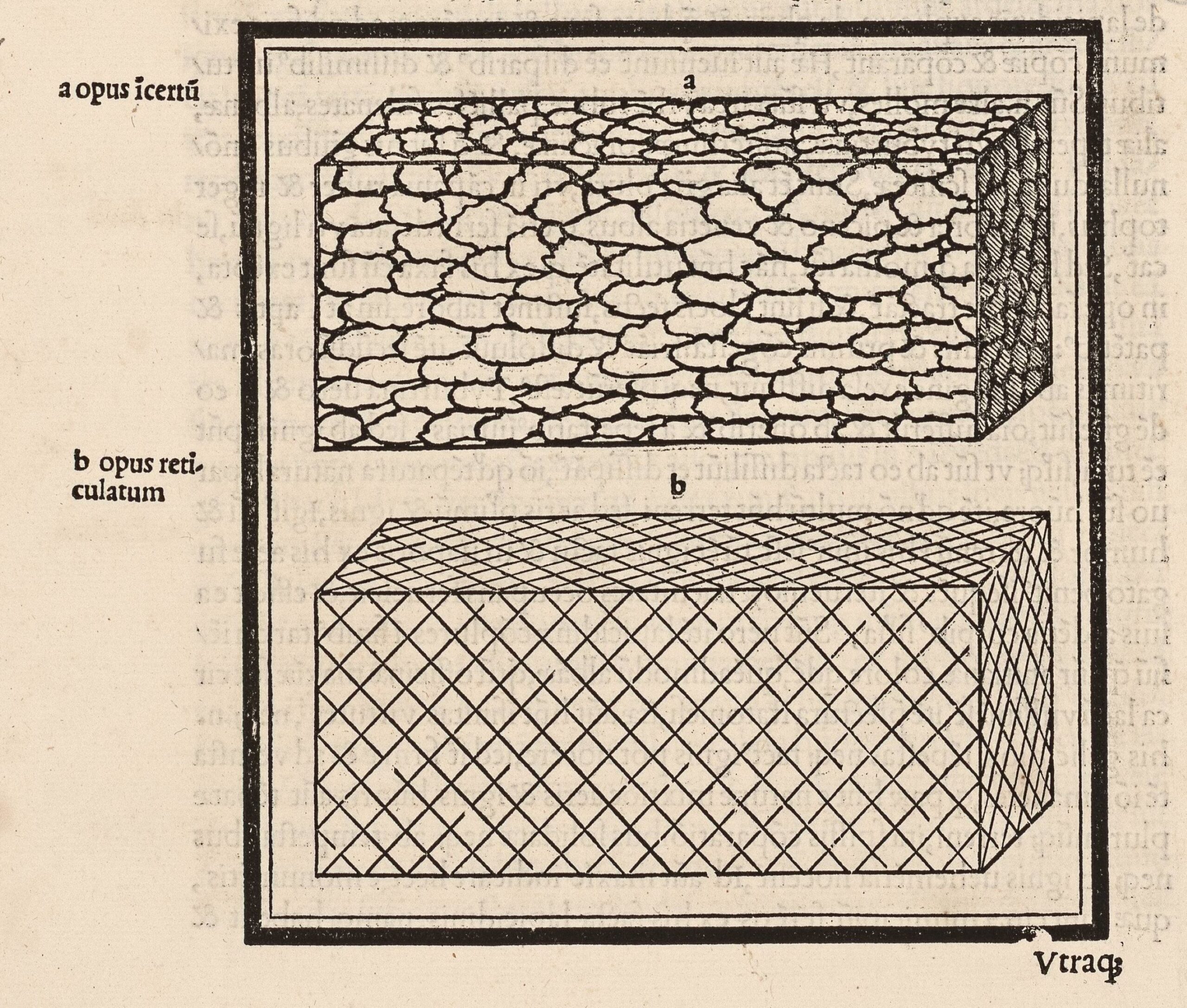

Illustrating building practices in action, however, reveals the gap between theoretical knowledge of buildings and practical knowledge needed to make them. This image accompanying the final section of Book Eight, which dealt with water sources is meant to show how to make a cistern. The woodcut shows workers mixing, and carrying the material for the cistern, with a legend to identify the different aspects of the process. The illustration is not so much a how-to as it was a scene meant to bring to life an ancient building practice for a contemporary audience. For the task, Vitruvius describes how to make opus signinum, a mix of lime mortar and shards of terracotta, which could serve as a waterproof seal, a fragment of which is seen in this photo.
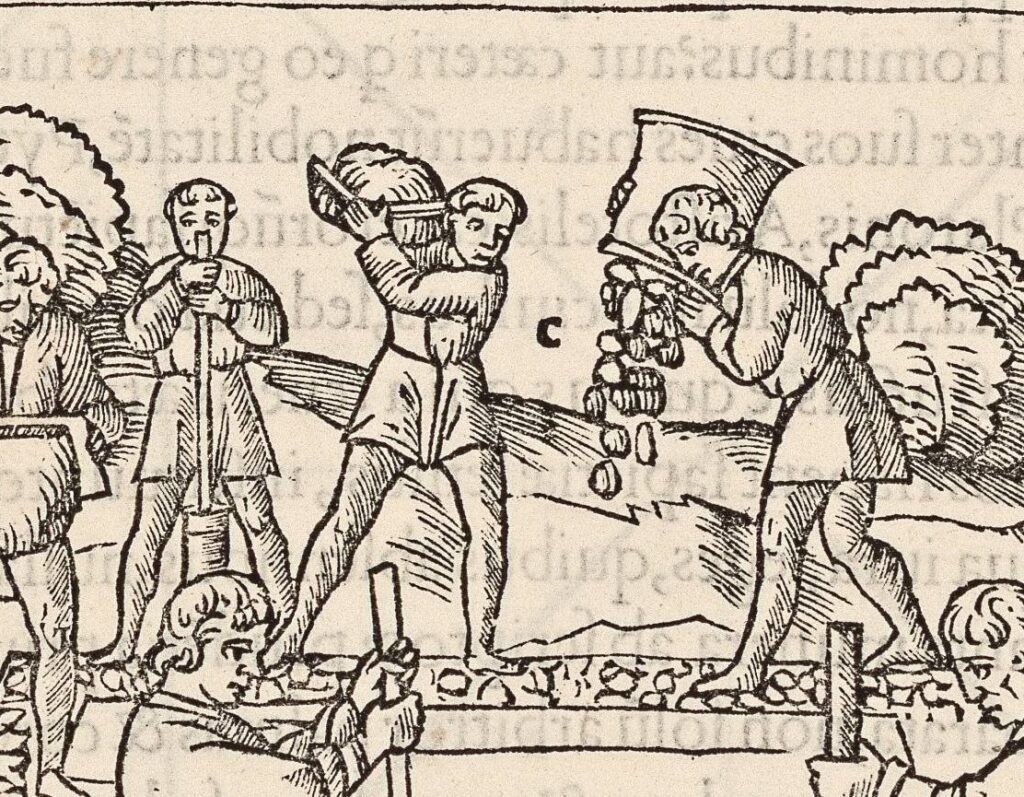
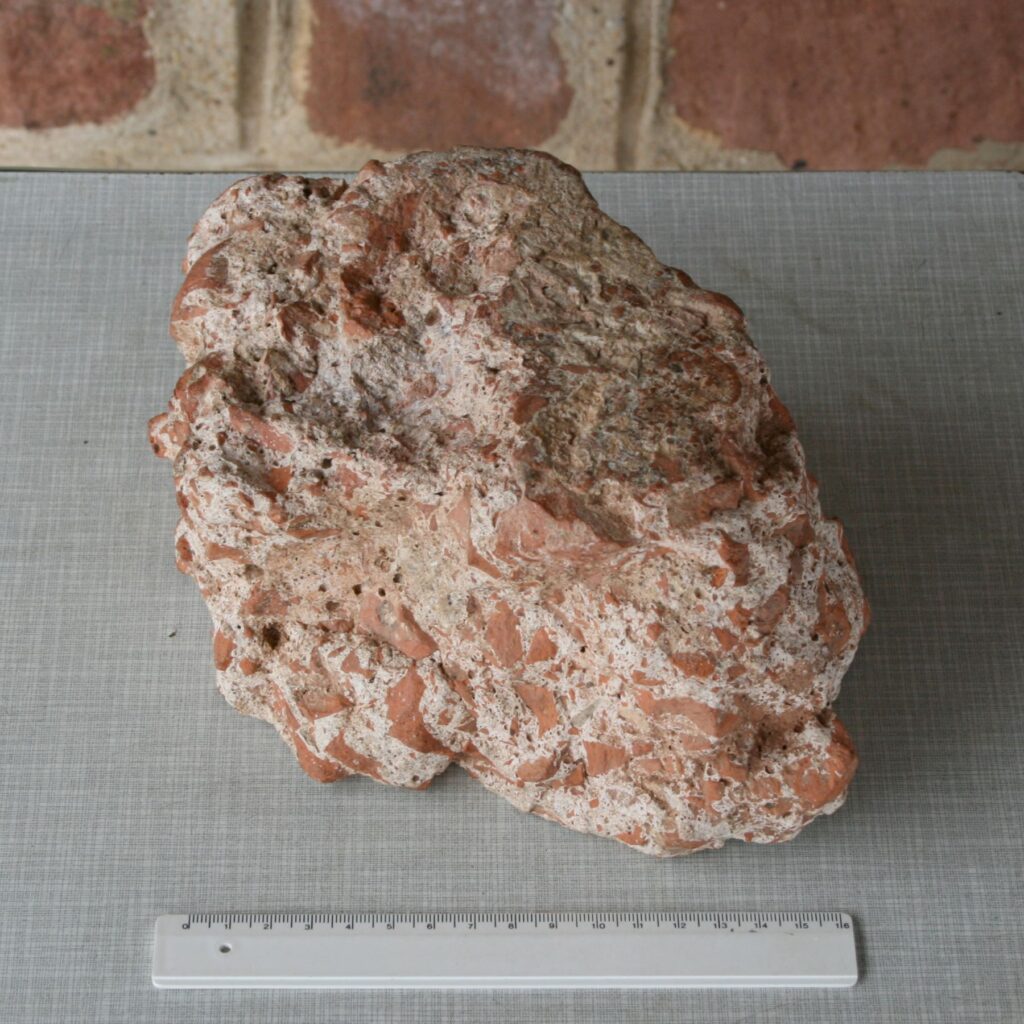
Other times the depictions of building practices were made to commemorate a historic event, as was the case in Domenico Fontana’s Della trasportatione dell’obelisco Vaticano published in 1590. The work penned by Fontana himself explains his engineering feat that was the movement of the Vatican obelisk to St. Peter’s square in 1586.
This engraving is used to depict the construction of the so-called “castle” which was used to lower the obelisk onto transport beds. An immense amount of labour was involved to build the structure that encompassed the obelisk. Still under construction, workers are shown using systems of pulleys and weights to build the edifice.
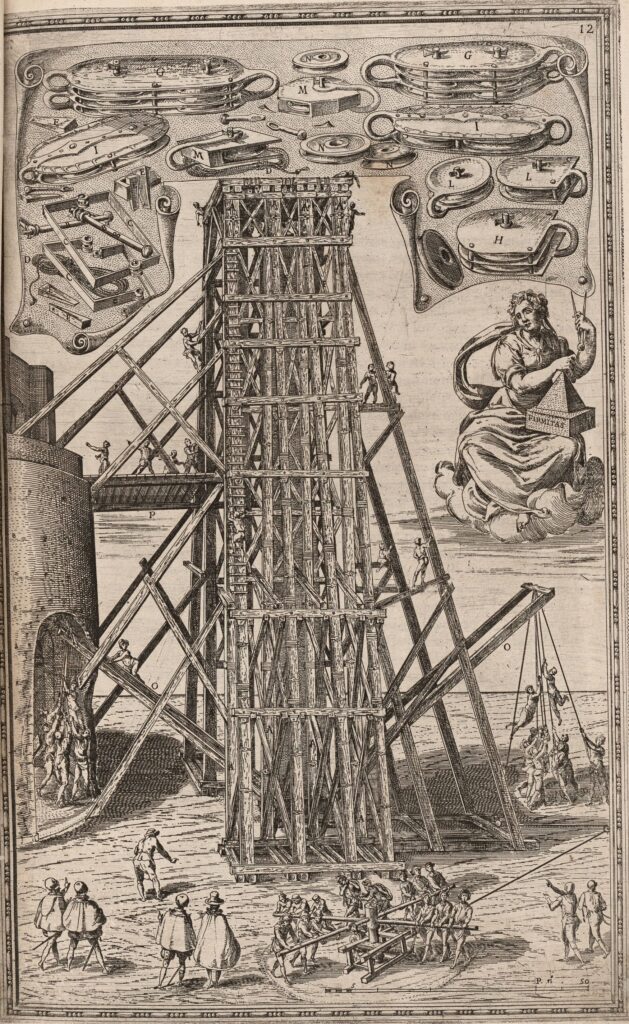
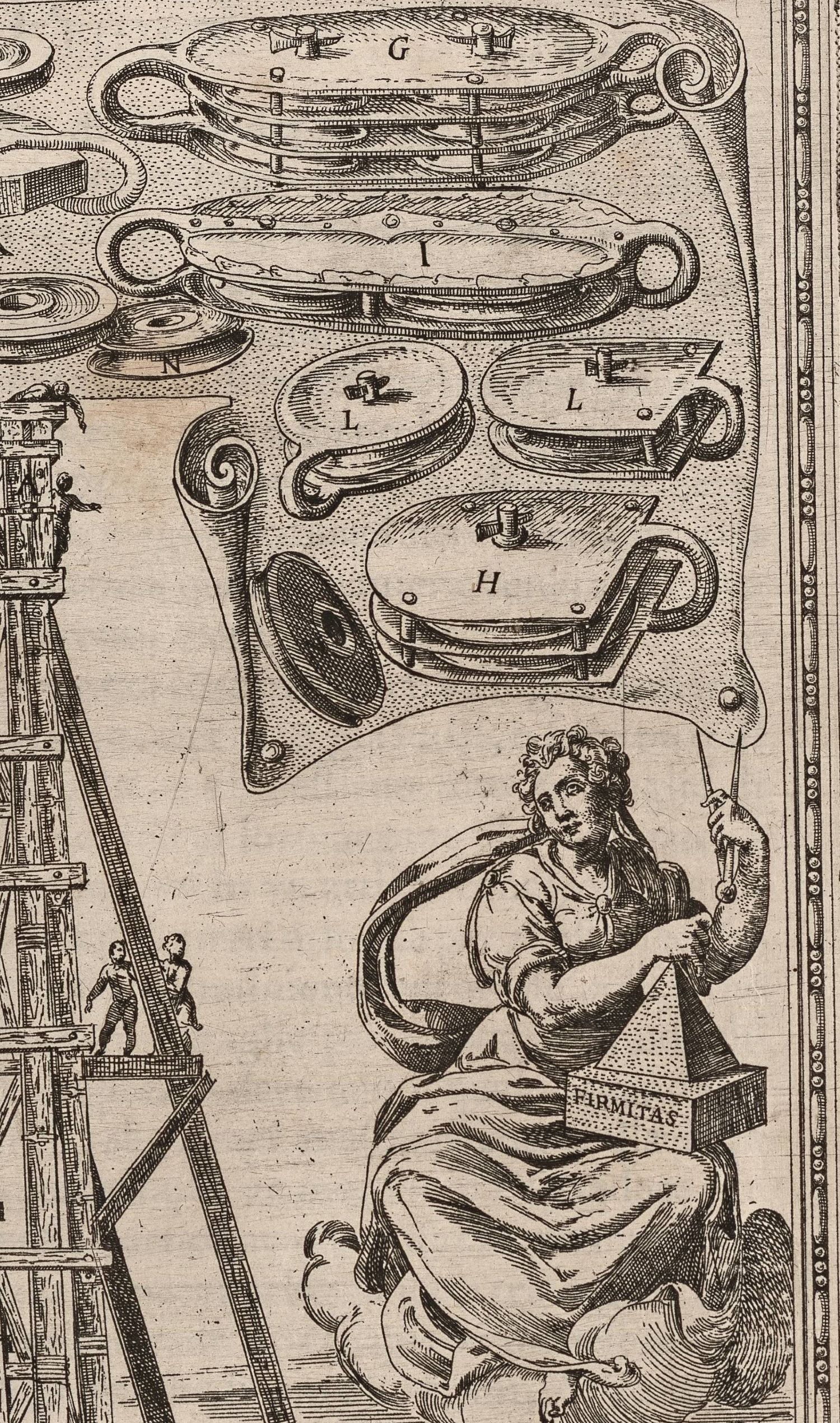
Next to the action is an allegorical figure of Firmitas, stability, who gestures upwards with her compass to enlarged representations of the range of pulleys, ropes, and stops among other mechanical devices that foreground the complex machinery that was underlying the process.
Other times historical practices were illustrated to show how the tools of scientific and artistic practice could be used. In the final section of his book on perspective, Daniele Barbaro provides three examples of tools that could aid in the execution of perspective. The second instrument is described as “Albrecht Dürer’s instrument for rendering perspective.”
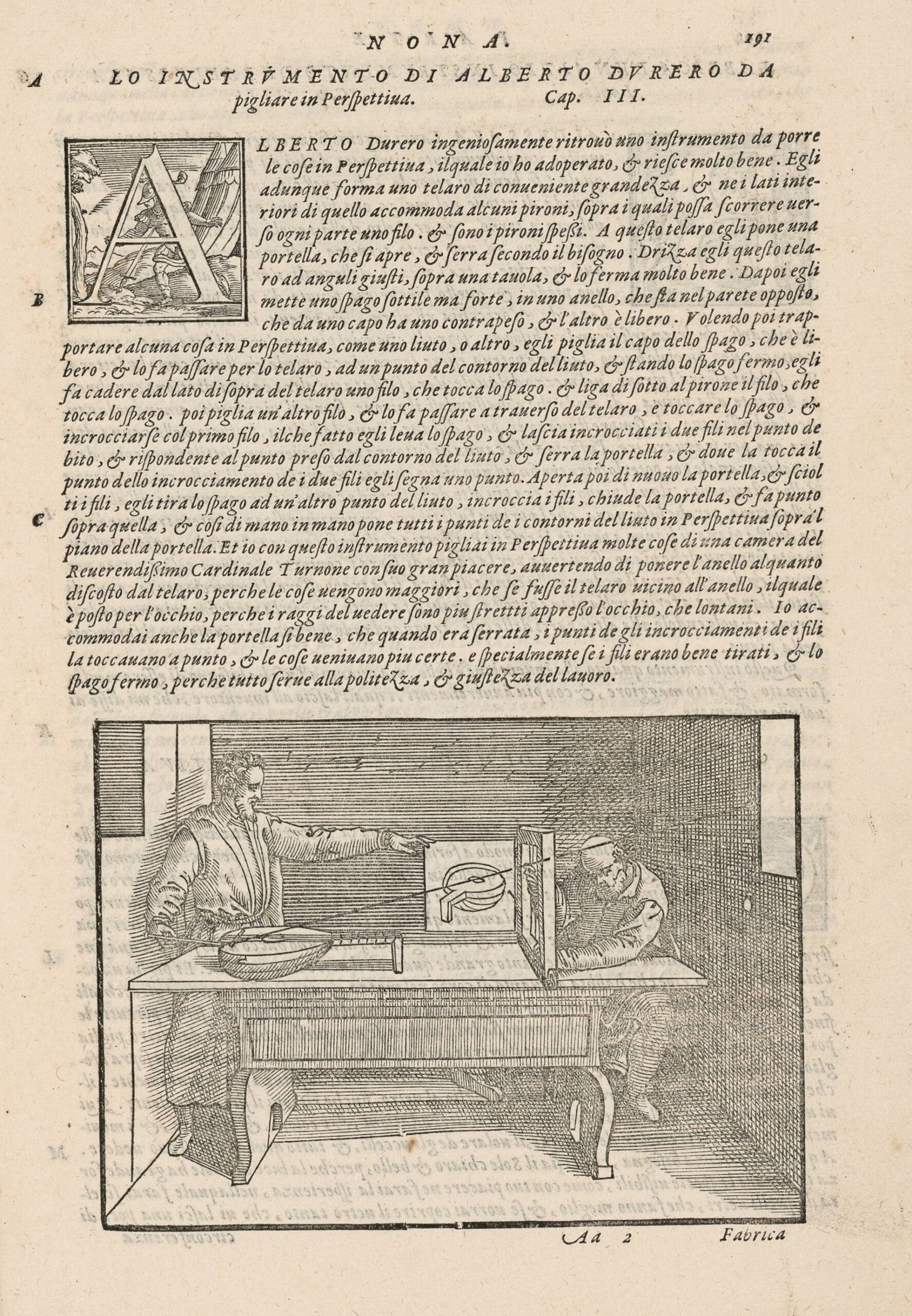
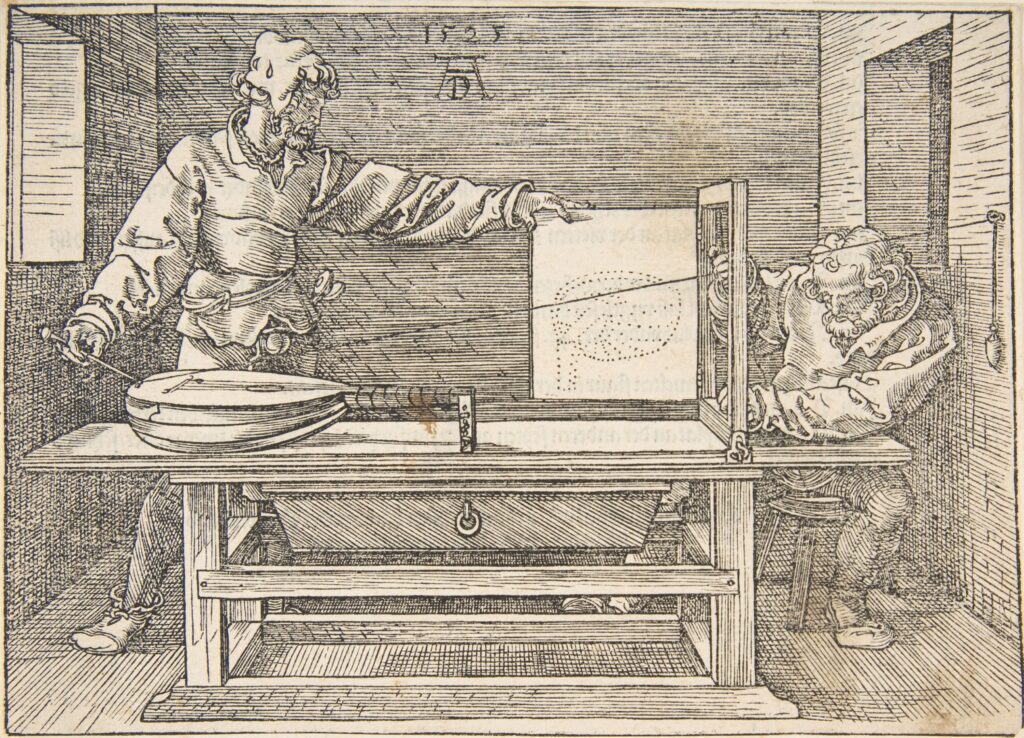
Dürer’s longstanding interest in perspective resulted in the publication of a treatise entitled Der Underweysung der Messung in 1525. After abstractly explaining the principles of perspective, Dürer included illustrations of how these kinds of measurements could done.

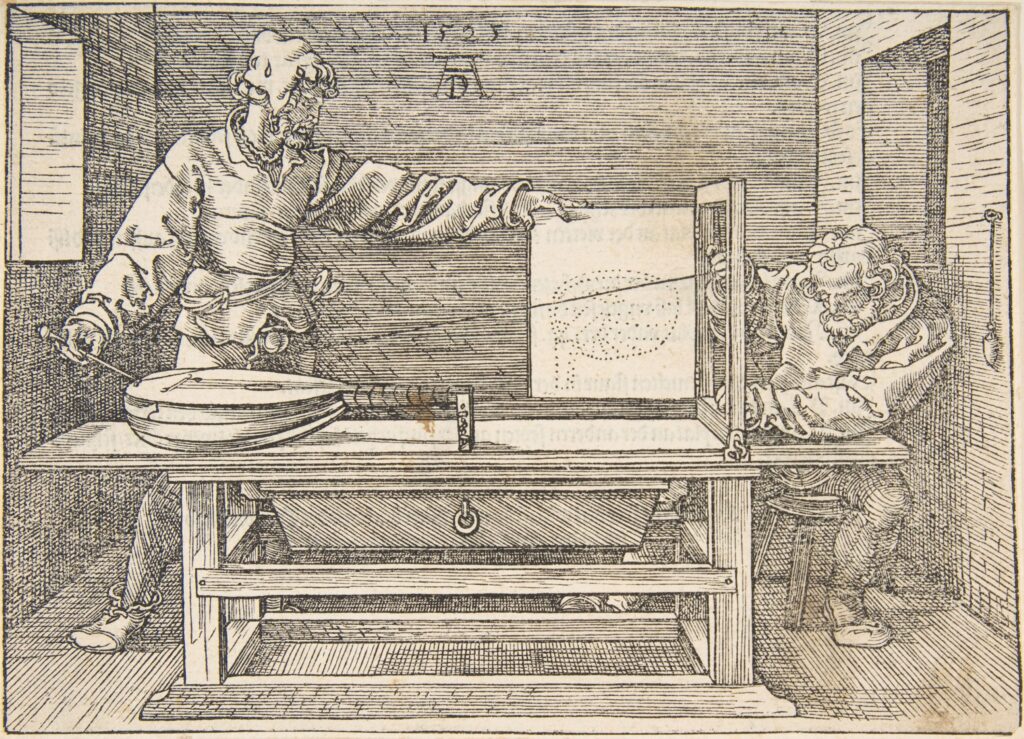
Rather than merely illustrating the device, as was the case with the two other instruments, Barbaro included a woodcut that is remarkably similar to the one in Dürer’s treatise. While there are notable omissions such as the dots used to compose the lute in order to underline how the technique transposed the information collected in the movement of the string, the choice to include an image that pays homage to Dürer’s demonstrates how Barbaro understood and historicized scientific innovation.
Even when practitioners were not included in images, depictions of instruments often provided indications as to how people were meant to use them. This was at times indicated through inclusion of singular body parts such as an eye or, a hand. In the case of this telescope as it is depicted in Musaeum Kircherianum by Filippo Buonanni, a small person is included in the image to give a sense of scale as well as weight. The pulley going through the top of the image indicates how heavy it is to work with a telescope. When looking closely, one can also find a small eye, indicating where the observer can look through the instrument. This telescope was part of the Museum collection of Athanasius Kircher, and depicted in the catalogue of his museum published by Buonanni in 1709.

Information on how to gain access to specimens for observation also came to be represented as a component of scientific practice. While most of the etchings in Giovanni Pietro Olina’s treatise on songbirds provide detailed visual descriptions of various species, in order to make such detailed observations it was first necessary to capture the birds. Alongside the ornithological information, Olina gives instructions on techniques to catch different kinds of birds from the type of food to prepare to the rigging of different nets. This etching sits at the start of the section on bird catching in the forest and illustrates how to use an owl attached to a post for this purpose.
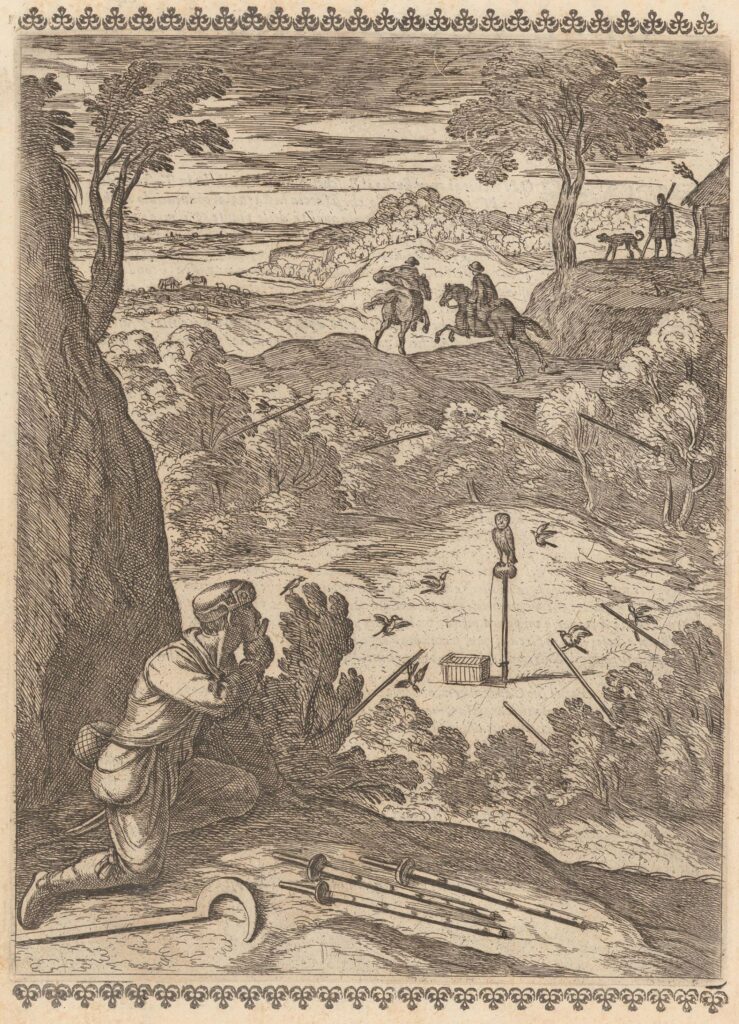

In this scenario the bird catcher was meant to wait silently behind a tree. Finger to lips, the bird catcher demonstrates to the readers the silence and patience required.
Illustrations of practice also allowed for authors to visualize abstract concepts spelled out in practical applications. Kircher’s Phonurgia nova displays a wide variety of acoustical experiments and sonic illusions. In the image below, Kircher tried to explain the special acoustical qualities of an elliptical room by means of his geometrical theory of sound. Although referring to a specific room that he himself experimented with, Kircher’s image bridges the realm of practical applications and scientific theories by including a diagrammatic representation of how sound moves through space. By means of images, Kircher brought such acoustical effects to the printed page, while at the same time never loosing sight of that which resists visualization.
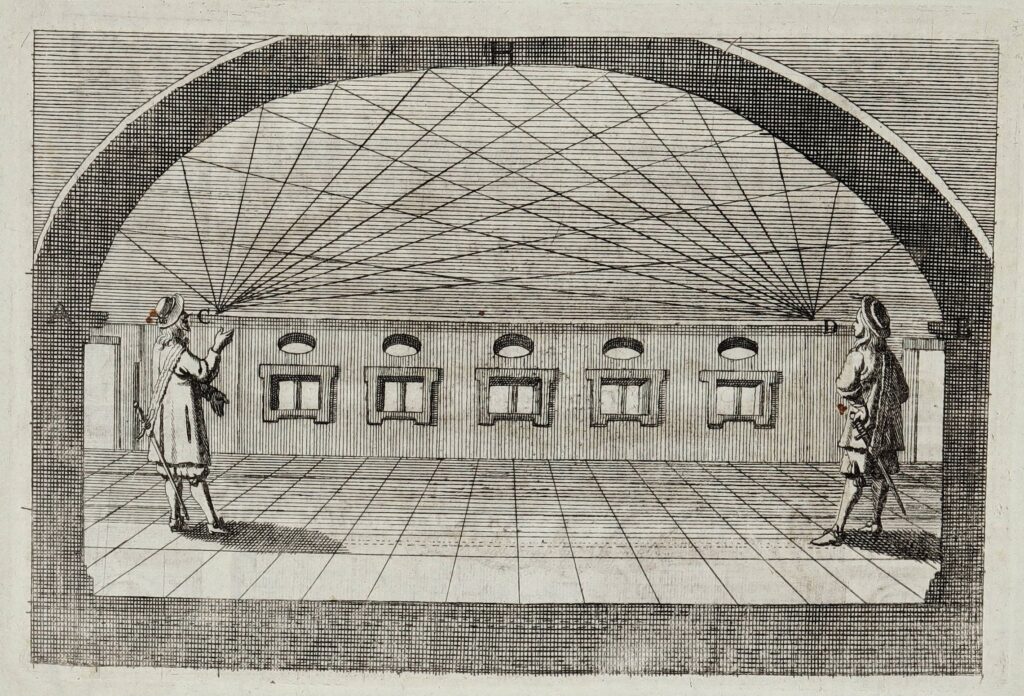
Sources:
- Barbaro, Daniele. La pratica della perspettiva opera molto utile a pittori, a scultori, & ad architetti. Venice: Camillo & Rutilio Borgominieri, 1569. Gh-BAR 587-1690 raro VI [Kubikat; Digitized Version]
- Buonanni, Philippo. Musaeum Kircherianum Sive Musæum A P. Athanasio Kirchero In Collegio Romano Societatis Jesu Jam Pridem Incœptum. Rome: Georgius Plachus, 1709. KatM-ROM 105-3090 raro VIII [Kubikat; Digitized Version]
- Fontana, Domenico, Della trasportatione dell’obelischo Vaticano et delle fabriche di Nostro Signore Papa Sisto V. Rome: Domenico Basa, 1590. Ca-FON 140-1900 raro VIII [Kubikat; Digitized Version]
- Kircher, Athanasius. Phonurgia nova sive conjugium mechanico-physicum artis & naturae paranympha phonosophia concinnatum. Kempten: Dreher, 1673. Zx 370-2730 raro VI [Kubikat; Digitized Version]
- Olina, Giovanni Pietro. Uccelliera. Rome: Angelo de Rossi, 1684. Hm 5715-2840 raro V [Kubikat; Digitized Version]
- Vitruvius,M. Vitruvius per locundum solito castigatior factus cum figuris et tabula, ut iam legi et intelligi possit. Venice: Ioannes de Tridino, 1511. Gf 200-1110 raro [Kubikat; Digitized Version]
Further Reading:
- Dupré, Sven, ed. Perspective as Practice: Renaissance Cultures of Optics. Turnhout: Brepols, 2019.
- Long, Pamela O. Openness, Secrecy, Authorship: Technical Arts and the Culture of Knowledge from Antiquity to the Renaissance. Baltimore: Johns Hopkins University Press, 2001.
- Long, Pamela O. Artisan/ Practioners and the Rise of the New Sciences, 1400-1600. Corvallis: Oregon State University Press, 2011.
- Neilson, Christina. Practice and Theory in the Italian Renaissance Workshop. Verrochio and the Epistemology of Making Art. Cambridge: Cambridge University Press, 2019.
- Smith, Pamela H. The Body of the Artisan: Art and Experience in the Scientific Revolution. Chicago: University of Chicago Press, 2004.
- Smith, Pamela H. From Lived Experience to the Written Word: Reconstructing Practical Knowledge in the Early Modern World. Chicago: University of Chicago Press, 2022.
- Valleriani, Matteo, ed. The Structures of Practical Knowledge. Cham: Springer International Publishing, 2017.